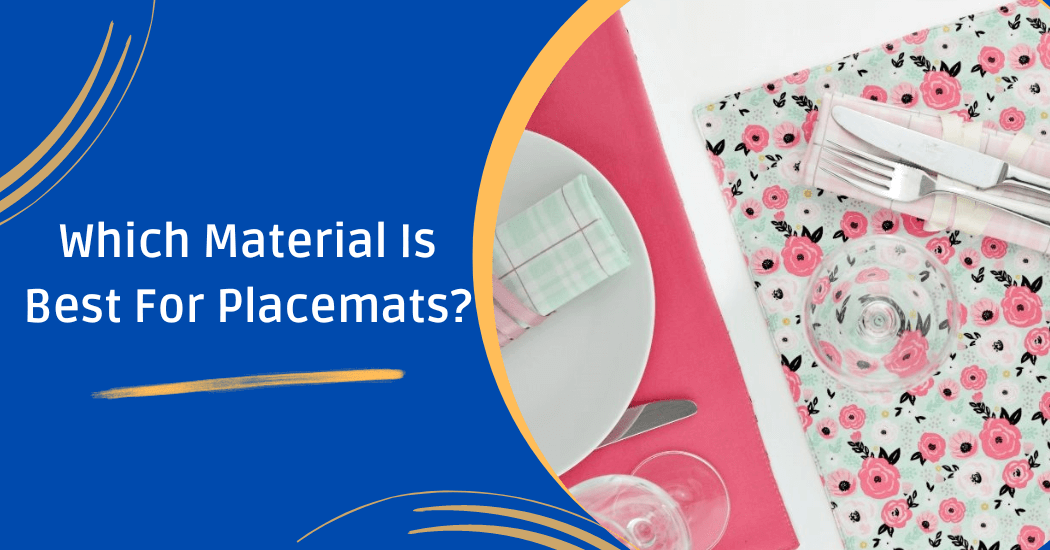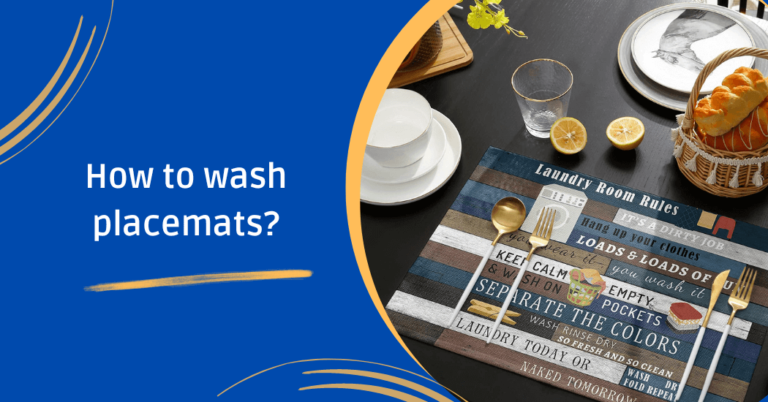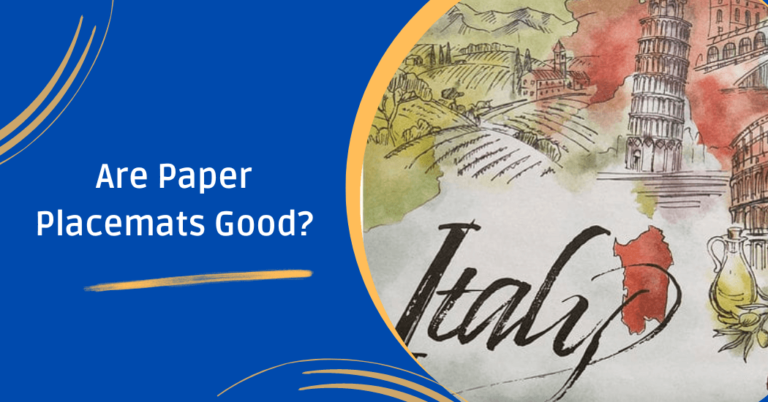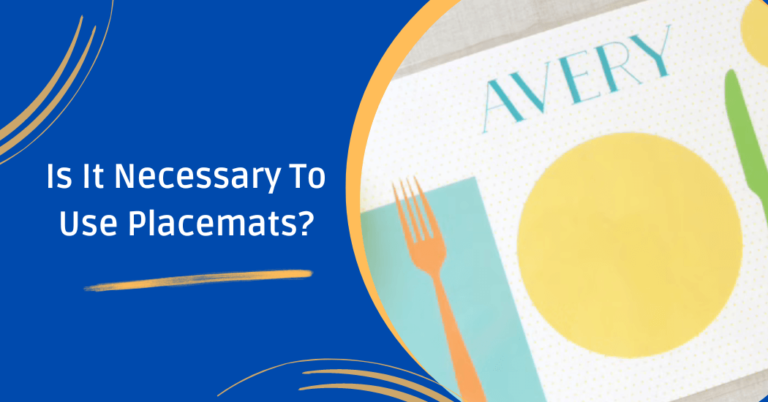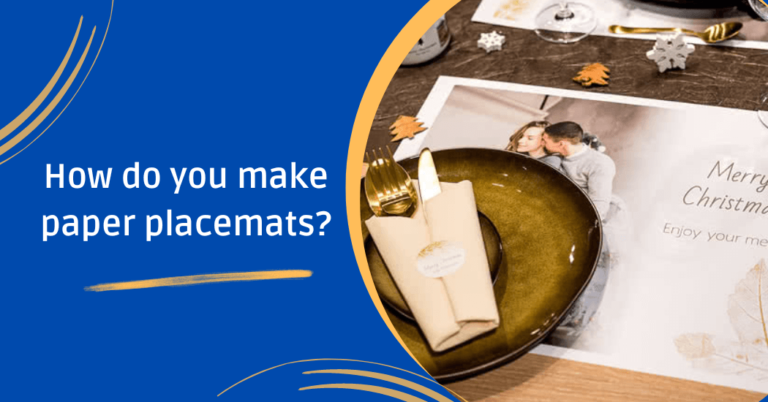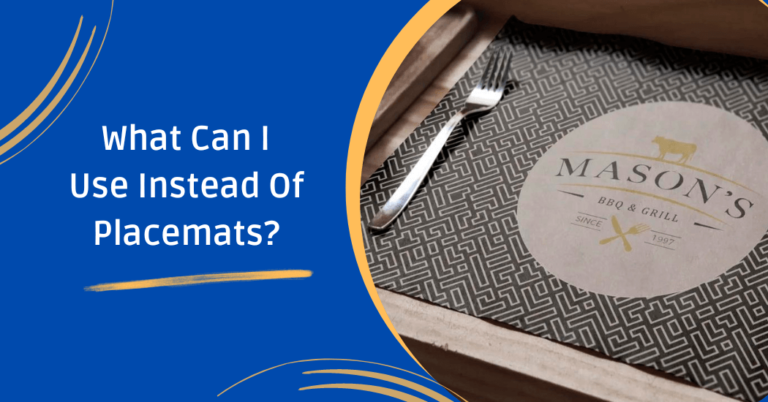Which material is best for placemats?
Placemats are a great addition to any kitchen or dining room decor. They offer protection to your table from stains and scratches, while also helping to keep it clean.
However, with so many different types of placemats available, it can be difficult to determine which material is the best choice. Factors such as ease of cleaning, durability and aesthetic appeal must all be considered.
In this article, Branded Placemats will explore the benefits and drawbacks of various placemat materials, ultimately helping you to make an informed decision on which one is right for your home.
Best Material For Placemats
When it comes to choosing the best material for placemats, there are various options available. From cloth to paper, vinyl to bamboo, each material has its own unique set of benefits to offer.
Those who prioritize durability and easy maintenance may prefer vinyl or silicone placemats, which can easily be wiped clean with a damp cloth. For a more eco-friendly option, bamboo or cork placemats offer a sustainable and renewable material that is both durable and aesthetically pleasing.
Cloth placemats, on the other hand, are the perfect choice for those looking to add a sophisticated touch to their table setting. Ultimately, the best material for placemats will depend on your specific needs and preferences.
Benefits and drawbacks of different placemat materials
1) Cotton
Benefits:
- Soft and comfortable to the touch.
- Easy to clean with a damp cloth.
- Highly absorbent, making it ideal for protecting the table from spills and heat.
- Available in a wide range of colors and patterns.
Drawbacks:
- Prone to staining and fading over time.
- Relatively fragile, so must be handled with care.
2) Linen
Benefits:
- Highly absorbent and quick-drying.
- Has a natural, elegant look.
- Resistant to tearing or fraying, so can be used over extended periods without fear of damage.
Drawbacks:
- Prone to wrinkling and may require ironing.
- More delicate than some other materials, making it less suitable for heavy-duty use.
- Not as easy to clean as other materials.
3) Vinyl
Benefits:
- Waterproof and stain-resistant.
- Extremely easy to clean; spills can be wiped off quickly.
- Heat-resistant, protecting your table from hot dishes.
- Available in various designs, including faux wood and tile patterns.
Drawbacks:
- Not as comfortable to the touch as some other materials.
- Usually not biodegradable or recyclable, making it less eco-friendly.
- Can be slippery if not securely attached to the table.
4) Bamboo
Benefits:
- Highly durable and resistant to staining and damage.
- Eco-friendly, as bamboo is a fast-growing, renewable resource.
- Lightweight, making it easy to transport and store.
- Can be wiped clean with a damp cloth.
Drawbacks:
- Not as absorbent as some other materials, making it less suitable for protecting the table from spills and heat.
- Can be difficult to find in certain colors or patterns.
- Typically comes in one size only, so may not fit all tables.
5) Leather or Faux Leather
Benefits:
- Extremely durable; can last for years with minimal care.
- Looks and feels luxurious, giving the table an upscale look.
- Easily wiped clean with a damp cloth.
- Features a wide range of attractive colors and patterns.
Drawbacks:
- Can be slippery if not securely attached to the table.
- Not as eco-friendly due to its use of synthetic animal products.
- Can be more expensive than other materials.
6) Polyester
Benefits:
- Highly stain and water-resistant.
- Very soft and comfortable to the touch.
- Easily wiped clean with a damp cloth.
- Available in an array of colors, designs and textures.
Drawbacks:
- Not as durable as some other materials; may need to be replaced more often.
- Can be slippery if not securely attached to the table.
- Not as eco-friendly due to its reliance on synthetic fibers.
Factors to consider when selecting placemat material
When selecting placemat material, there are several factors to consider to ensure that you choose the right material for your specific needs and preferences.
Here are some key factors to keep in mind:
- Durability: When selecting placemat material, consider whether the material will be able to withstand wear and tear. Look for materials that are highly resistant to staining and water damage.
- Texture and Grip: The texture of the placemat can affect its functionality. Some materials have a non-slip surface or backing to prevent dishes from sliding around. Consider the grip and feel of the material to ensure it suits your needs.
- Style: Placemats can add to the aesthetic of your dining setting. Look for placemats made from materials that complement your existing tableware and decor.
- Price: Different placemat materials come with different price points. Consider your budget when selecting placemat material to ensure you get the most value for your money.
- Special Occasions: Consider whether you’ll be using the placemats for everyday dining or special occasions. For formal events, you may prefer placemats made from more elegant materials like silk or linen.
- Heat Resistance: If you plan to place hot dishes or utensils on your placemats, ensure they can withstand heat without getting damaged or discolored. Materials like cork, bamboo and some types of fabric may not be heat-resistant, so be cautious with hot items.
- Maintenance: Make sure to select a material that is easy to clean and maintain. Some materials may require specialized cleaning products or techniques and may be better suited for an outdoor setting.
By considering these factors, you can make an informed decision when selecting a placemat material that best suits your needs, style and preferences.
Tips for finding perfect placemats that fit your needs
- Think about size: Placemats come in a range of sizes, so it’s important to consider the size of your table and how many people you are likely to be seating when selecting your placemats. If you have an unusually shaped table, such as an oval or round, make sure that the placemats you choose will fit properly.
- Consider the occasion: Some materials, such as leather or velvet, are more suited to formal occasions. If you’re looking for placemats for a dinner party, consider buying materials that will give your table an upscale look. On the other hand, if you’re hosting a casual family gathering, choosing more durable and brightly colored placemats may be better suited to your needs.
- Look for quality materials: When selecting placemats, you’ll want to make sure they are made from high-quality materials that won’t fade or crack over time. Be aware of any chemicals that may be used in the production process and try to find placemats made from materials that are free of any toxic substances.
- Check for easy cleaning: Make sure that the placemats you choose are easy to clean and maintain. Opt for materials that can be wiped down with a damp cloth or even thrown in the washing machine if they’re made from fabric. This will save you time and effort when it comes to keeping your placemats looking their best.
- Consider your budget: Think about the budget when making your selection. While more expensive materials may look nicer, they may not fit into your budget. Consider choosing materials like cotton or canvas, which tend to be more affordable.
By taking these factors into account, you can find placemats that not only protect your table but also enhance the overall look and feel of your dining experience.
Wrap Up
After much research and consideration, it is clear that the best material for placemats is dependent on personal preference and usage. For those who prioritize ease of cleaning, vinyl or polyester placemats are a great option as they are resistant to spills and stains.
However, those looking for a more eco-friendly choice may want to consider bamboo placemats. This material is durable and sustainable, making it a great option for those looking to lessen their environmental impact.
Lastly, those who want a high-end look may opt for leather or linen placemats. Ultimately, it is important to take into account your personal needs and preferences before deciding on the best material for your placemats.
